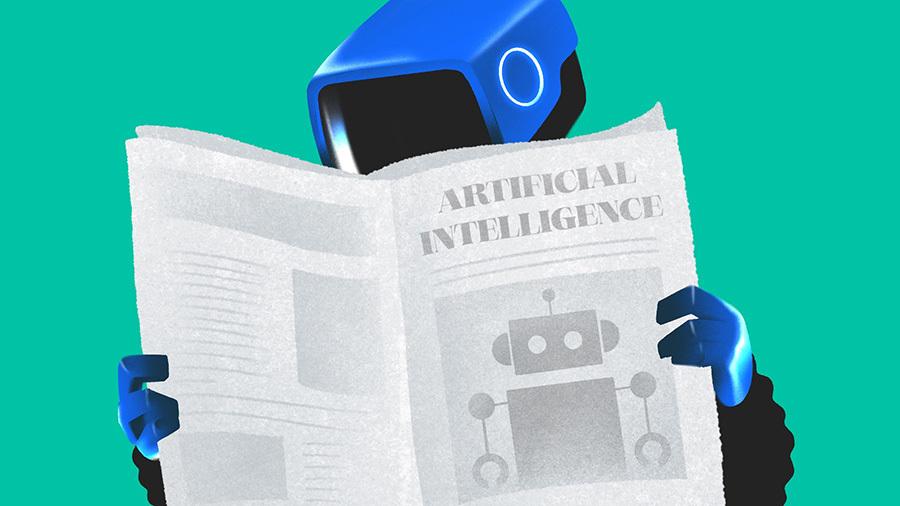The media industry is bracing for war against AI, and it’s already lost. Last week, The Wall Street Journal painted the picture: Publishers are scrambling to block AI crawlers from accessing their content, working with companies including Cloudflare to build digital moats around their websites, and pursuing lawsuits against tech giants for scraping their work without compensation.
The scraping, according to Cloudflare, has surged 18% in the past year. Some publishers, like Dotdash Meredith, are cutting licensing deals with OpenAI while also trying to choke off what it calls “bad actors.” But here’s the hard truth: All of this defensive maneuvering is like boarding up the windows after the storm has already blown through. AI isn’t breaking in. It’s building something new entirely — and the smart move is to get invited inside.
Don’t get left behind
From where I sit, paywalls, as a concept, are seriously living on borrowed time. They’ve always relied more on friction than loyalty. People subscribed to read one article, forgot to cancel, or clicked out of guilt when their free views ran out. That model was always fragile — and generative AI is exposing the cracks.
Today, most people don’t need to visit 10 different sites to get the news. They want fast, portable summaries. They want context in the same breath as content. LLMs don’t need to copy your article to kill your traffic — they just need to remove the need for it. If ChatGPT can give a clear, concise, accurate answer to “What happened in Gaza this morning?” — most users won’t click through to five full-length op-eds. And if your outlet has banned crawlers, congratulations — you’ve made yourself invisible in the only newsroom that matters now: the one inside the machine.
The fight to protect so-called proprietary content profoundly misunderstands the nature of content (and fully lacks nuance) in 2025. Text is already a remix culture. News sites summarize other news sites. Bloggers paraphrase headlines. Analysts repackage coverage with “insights.” Even the most original scoop gets sliced, quoted and tweeted into a dozen versions within hours.
AI doesn’t change that — it automates it. Fighting that is like fighting email because it made fax machines obsolete. What’s more, AI-generated summaries often increase the visibility of high-quality reporting. If a chatbot cites your outlet regularly, that’s reach. If it gets the gist of your piece exactly right, that’s influence. Banning AI from seeing your work doesn’t stop your ideas from spreading — it just cuts you out of the credit cycle. It’s like a professor trying to stop their research from being cited in academic papers because they didn’t approve the footnotes.
A better path
Publishers should be working to collaborate with AI platforms, not wall them off. Embed metadata that tells LLMs who wrote the piece. Build deals that prioritize your bylines, link back to your coverage, and let your headlines flow through these models with attribution. Become the signal in a sea of synthetic noise.
That’s what Dotdash Meredith is doing with OpenAI. That’s what smart publishers will do with Google’s AI Overviews. If a model starts defaulting to The New York Times, The Atlantic or Bloomberg because those sources made themselves indexable, consistent and AI-friendly, that’s not a loss of control. That’s a win in brand equity, reach and reader trust. You want the machines quoting you, not ghosting you.
Here’s the omnipresent reality: The entire next generation of news consumers will meet the world through AI.
When a teenager in Kansas asks their AI assistant why the Supreme Court overturned a precedent, or a voter in Arizona asks about a candidate’s housing record, they won’t be thumbing through newspaper archives. They’ll get a verbal summary in eight seconds.
If your journalism doesn’t appear in that summary, you don’t exist in that conversation. It’s not that AI is replacing the value of journalism — it’s replacing the pathway to it. And the publishers who treat AI as an enemy will learn, too late, that they trained their successor not to remember them.
The future of media isn’t behind a wall. It’s in the bloodstream. It’s in training sets, in embedded links, in smart attribution, in being so good that even the robots want to get the story right. There’s no dignity in hiding. And no sustainability in suing your way back to a broken business model. If you want to survive, stop worrying about how to keep the bots out — and start thinking about how to make sure they cite you when it counts.
Aron Solomon is the chief strategy officer for Amplify. He holds a law degree and has taught entrepreneurship at McGill University and the University of Pennsylvania, and was elected to Fastcase 50, recognizing the top 50 legal innovators in the world. His writing has been featured in Newsweek, The Hill, Fast Company, Fortune, Forbes, CBS News, CNBC, USA Today and many other publications. He was nominated for a Pulitzer Prize for his op-ed in The Independent exposing the NFL’s “race-norming” policies.
Related reading:
Illustration: Dom Guzman

Stay up to date with recent funding rounds, acquisitions, and more with the
Crunchbase Daily.

